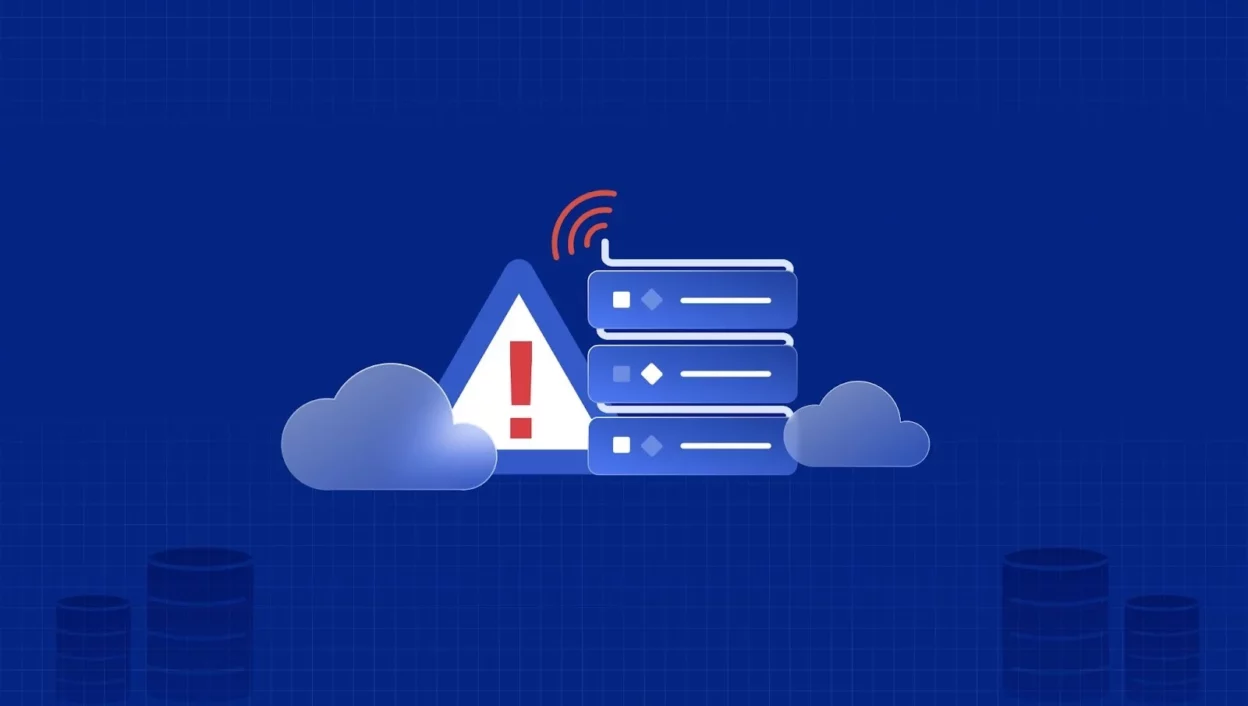Last Updated on July 24, 2025 by Lexy Summer
Start by choosing a framework like the Serverless Framework or AWS SAM that aligns with your scalability needs. Design your app using event-driven architecture to handle asynchronous interactions efficiently; understanding core services for this pattern, like Amazon SNS for pub/sub messaging, is crucial for decoupling components.
Manage cold starts by pre-warming functions and selecting lightweight runtimes. Guarantee security with immutable deployments and least privilege access. Leverage monitoring tools like AWS CloudWatch to track performance and detect issues early. These strategies will set you on the path to mastering serverless development.
Choosing the Right Framework for Scalability and Flexibility
When choosing the right framework for serverless application development, it is vital to balance scalability and flexibility to meet your project’s demands.
The Serverless Framework is provider-agnostic, enabling deployment across multiple cloud services and supporting various programming languages, ideal for multi-cloud projects. AWS SAM offers tight integration with AWS services but lacks flexibility outside its ecosystem. The SAM Accelerate feature enhances local development by synchronizing infrastructure changes instantly.
The Serverless Framework supports multi-cloud projects, while AWS SAM excels within its ecosystem but offers limited external flexibility.
Kubernetes integration enhances serverless frameworks by leveraging container orchestration for complex apps, providing manual control over scaling configurations.
For serverless application development services, consider auto-scaling features inherent in serverless platforms, adjusting to demand without manual intervention. Scalability tools like TiDB guarantee dynamic node scaling for databases, aligning with cost-effective pay-per-use models. Popular serverless frameworks on Kubernetes include OpenFaaS and Knative.
Partnering with a serverless application development company guarantees you select a framework that optimizes scalability, flexibility, and cost-efficiency for your specific needs.
Understanding Event-Driven Architecture for Efficient Function Design
Event-driven architecture enables you to design applications that respond to changes in state, allowing for asynchronous and decoupled interactions between components. It relies on events, which are state changes detected in hardware or software, to trigger actions.
Producers generate events, brokers route them, and consumers process them, often using serverless functions for scalability.
This architecture is ideal for serverless application development services in India, as it simplifies app management and reduces IT costs.
Platforms like AWS Lambda automatically scale based on event demand, letting you focus on application logic.
The Serverless Framework provides tools like the Event Gateway to standardize event communication and enhance local development efficiency.
Tools like Amazon EventBridge and SNS facilitate event routing and reliable delivery.
Using state machines can help manage complex workflows and ensure resilience in event-driven applications.
Managing Cold Starts to Optimize Performance
To optimize serverless application performance, managing cold starts is critical since they introduce latency during function initialization. Use pre-warming to maintain a pool of pre-initialized runtime environments, leveraging features like AWS Lambda’s provisioned concurrency. Choose lightweight runtimes such as Node.js or Python over heavier options like Java or .NET to reduce startup time. Increase memory allocation for more CPU power, but balance this against higher costs. Shrink deployment package sizes to minimize network latency during initialization. Optimize function design by keeping code lightweight and dependencies minimal to speed up loading. Implement async initialization to handle heavy setups without delaying the main function. Monitor performance to identify bottlenecks and continuously refine your strategies for reducing cold start impact. Serverless platforms improve efficiency by reusing runtime instances for multiple requests within short intervals. Warm starts bypass the initial setup process, resulting in faster execution and reduced latency.
Ensuring Security and Compliance in Serverless Environments
While serverless architectures offer scalability and cost-efficiency, they introduce unique security and compliance challenges that require proactive measures. Enforce immutable function deployments to prevent runtime alterations and guarantee each update creates a new version. Utilize serverless secrets management tools like AWS Secrets Manager or HashiCorp Vault to securely store and access sensitive information.
Utilize secure API gateways with protocols like OAuth 2.0 to manage credentials and reduce exposure. Assign the least privilege access to functions, limiting permissions to only what’s necessary. Implement thorough logging and real-time monitoring to detect security incidents early. Segment functions into isolated units to contain breaches. Integrate AWS WAF to protect your serverless applications from DDoS attacks and other web threats.
Shift security left in the development lifecycle by integrating automated testing into CI/CD pipelines. Guarantee compliance by understanding regulatory requirements and maintaining audit-ready logging systems. Protect sensitive data with policies aligned with standards and multi-cloud security strategies for consistent visibility. Regularly scan code for vulnerabilities using DAST and SAST tools. Additionally, consider engaging in regular web application pen testing to uncover potential security gaps that automated tools might overlook, providing an extra layer of assurance for serverless applications.
Leveraging Monitoring Tools for Effective Resource Management
Effective resource management in serverless applications hinges on leveraging monitoring tools to track performance and optimize usage. Start by defining clear metrics, such as error rate, invocation count, and latency, to guarantee your application meets performance thresholds. Future of Serverless Monitoring includes advancements in distributed tracing and cost optimization tools that will revolutionize how we manage serverless resources.
Monitor individual serverless function behavior to identify issues quickly and choose tools like AWS CloudWatch, Datadog, or New Relic for end-to-end visibility. Leverage structured logs in JSON format to enhance searchability and filtering of log data. Set up real-time alerts to detect anomalies before they escalate and customize monitoring dashboards to highlight critical performance indicators.
Integrate these tools into your DevOps pipeline for seamless operation and continuously evaluate their effectiveness. Focus on cost efficiency metrics to avoid unnecessary expenses. By addressing challenges like infrastructure abstraction and debugging complexity, you’ll guarantee scalable, transparent, and optimized serverless resource management.
Frequently Asked Questions
What Is the Cost Difference Between Serverless and Traditional Hosting?
Serverless costs depend on usage and auto-scaling, making it cost-effective for variable traffic. Traditional hosting has fixed expenses, including hardware and software maintenance, but it’s better for consistent high traffic. Resource utilization varies substantially.
Can Serverless Functions Handle Long-Running Tasks?
Serverless functions can’t natively handle long-running tasks due to strict timeouts like AWS Lambda’s 15-minute limit. Break tasks into smaller steps, use orchestration tools like AWS Step Functions, or offload to non-serverless resources for solutions.
How Do I Migrate an Existing App to Serverless?
Picture your app as a ship sailing to a new port. Rehost it quickly via lift and shift, refactor it into smaller, agile boats, or rebuild it entirely for smoother waters. Choose your path wisely.
What Happens if a Serverless Function Fails?
If a serverless function fails, you’ll face data loss, degraded customer experience, and increased costs. Failures stem from unhandled exceptions, timeouts, or quotas. Use retries, dead-letter queues, and monitoring tools to handle and debug these issues efficiently.
Does Serverless Support Real-Time Data Processing?
Serverless supports real-time data processing through event-driven triggers and low-latency execution. Functions scale automatically to handle spikes in data streams, ensuring real-time analytics, IoT responses, and efficient big data processing without managing infrastructure.
Conclusion
By adhering to these five rules, you’ll build serverless applications that scale seamlessly and perform reliably. Like a well-oiled machine, your system will thrive with the right framework, event-driven design, and cold start mitigation. Prioritize security and compliance to safeguard your architecture, and harness monitoring tools to fine-tune resource usage. Mastering these principles guarantees your serverless journey avoids pitfalls, delivering robust, efficient solutions that evolve with your needs. Stay sharp; the cloud demands precision.

Lexy Summer is a talented writer with a deep passion for the art of language and storytelling. With a background in editing and content creation, Lexy has honed her skills in crafting clear, engaging, and grammatically flawless writing.



